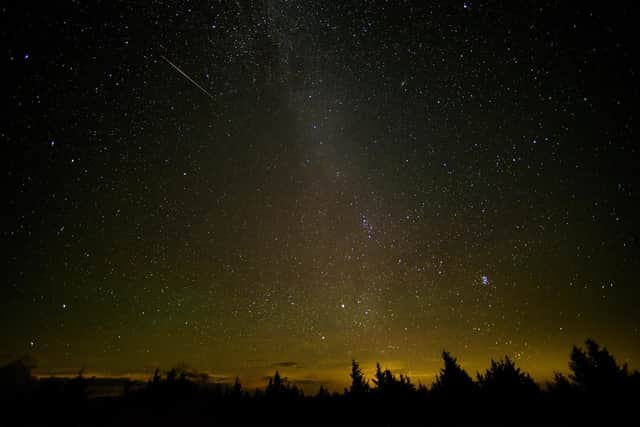How to see the Orionid meteor shower in Doncaster: time, place, date
and live on Freeview channel 276
This evening, on October 21st, the Orionid meteor shower will be clearly visible in the night sky – it’s bound to be a spectacular sight, so make sure you don’t miss out.
It’s part of something that only takes place roughly every 75 years. The Orionid meteor shower can be seen every year around October, but the more interesting part is what they are connected to and associated with – 1P/Halley (more colloquially known as Halley’s Comet). Halley’s Comet last appeared over Earth in 1986 and will appear again in 2061.
Advertisement
Hide AdAdvertisement
Hide AdThis means that, despite its rarity, Halley’s Comet is the only known semblance of its kind that can realistically be seen from Earth twice in a person’s lifetime. But, enough about Halley’s Comet – unless you fancy waiting an additional 40 years.


You won’t need a telescope – the Orionid meteor shower can be seen perfectly clearly with just the naked eye. However, if you want a more detailed view, then bringing a telescope can’t hurt. Meteors in the night can grow to be very bright, so take care of your eyesight.
What is the best way to see the Orionid meteor shower?
If you are wanting to see a clear view of the Orionid meteor shower, you must travel to a location with minimal light pollution. Unfortunately, being a predominantly urban environment with plenty of cars, buildings and street lights, Doncaster simply isn’t a good place to see it. You’ll have to travel out of town to get a good view.
There’s a few viable directions to drive in to get to somewhere with lower light pollution. Travelling north to the outskirts of York isn’t a bad idea, as light pollution levels are low around the rural parts of North Yorkshire, but there’s better options.
Advertisement
Hide AdAdvertisement
Hide AdIdeally, you want to travel east to the non-urban areas of Nottinghamshire (mainly North Nottinghamshire), or south-west towards the Peak District. Both areas contains pockets of land with virtually no light pollution.
To get the best view, you’ll want to stand in an open field, away from any trees. Take care to not encroach onto private land when doing so, though. The best time to see them will be between 12pm and 12am.